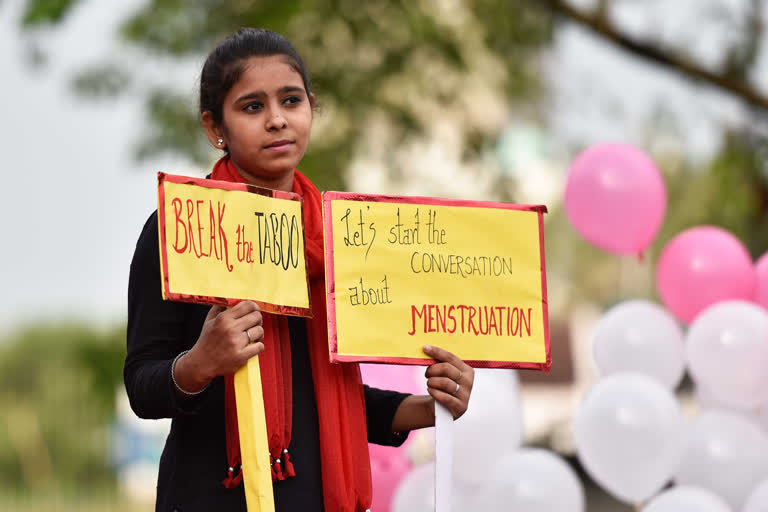New Delhi: With the world celebrating World Menstrual Hygiene Day today, it calls for introspection on how India has fared, so far menstrual hygiene is concerned, and the available reports and figures do not paint a very rosy picture.
In the 21st century India, menstruation is something that still carries the burden of being a taboo, it is still discussed in hushed tones, and in some cases not discussed at all. The stigma attached to this very natural phenomena often leads to unsafe and unsanitary menstrual hygiene practices.
A National Family Health Survey (NFHS) report, 2015-16 suggests that nearly 62 percent women in the age group of 15-24 years still rely on cloth pieces, rags, hay, ash, wood shavings, newspapers, dried leaves, or even plastic during periods.
On an average a woman menstruates for 2,250 days (450 cycles) in her lifetime as per the Association of Reproductive Health Professionals (ARHP), forcing them to spend a fortune on menstrual hygiene products.
Despite the fact that only a handful of women use sanitary napkins or tampons during their periods, owing to expensive menstrual merchandise, lack of awareness or lack of availability, the Government of India, instead of making them readily available at low cost prices, has in turn imposed a 12% tax on sanitary napkins and tampons under Goods and Services Tax (GST).
“A period should end a sentence – not a girl’s education”
Apart from denting a woman's pocket, menstruation in India also affects her prospects of attaining education.
A 2015 report titled 'Spot On!' by Dasra, a Mumbai-based philanthropy foundation and the Bank of America reveals that nearly 23 million girls drop out of school annually due to lack of proper menstrual hygiene management facilities- availability of sanitary napkins and logical awareness of menstruation.
The report also came up with some startling numbers. 70 per cent of mothers with menstruating daughters considered menstruation as dirty and 71 per cent adolescent girls remained unaware of menstruation till menarche.
Another 2015 report by the Ministry of Education, suggests that in 63 percent of schools in Indian villages, teachers never held a discussion on menstruation and the different ways to deal with it in a hygienic manner.
Lack of awareness and limited access to hygienic menstrual products and period-friendly sanitation facilities in schools means that periods are a significant obstacle for millions of girls to attend and perform well in school.
Women’s health in jeopardy
Surveys by the Ministry of Health in 2002, 2005, 2008 and 2012 found out that most problems related to menstrual hygiene in India are preventable, but are not due to low awareness and poor menstrual hygiene management. This resulted in the development of some serious ailments for adolescent girls. Roughly 120 million menstruating adolescents in India experience menstrual dysfunctions, affecting their normal daily chores. Nearly 60,000 cases of cervical cancer deaths are reported every year from India, two-thirds of which are due to poor menstrual hygiene.
Other health problems associated with menstrual hygiene like anaemia, prolonged or short periods, infections of reproductive tracts, as well as psychological problems such as anxiety, embarrassment, and shame.
Silver lining
With continued efforts towards improving the raising awareness of the fundamental role that Menstrual Hygiene Management (MHM), the latest National Family and Health Survey 4 reveals that 58 per cent of young Indian women (15-24 years) use a hygienic method of protection (mostly sanitary pads), a significant increase from the 12 per cent using pads in 2010, as reported by the Plan and AC Nielsen study.
Also read: PM Modi likely to visit Maldives for first bilateral visit after re-election



